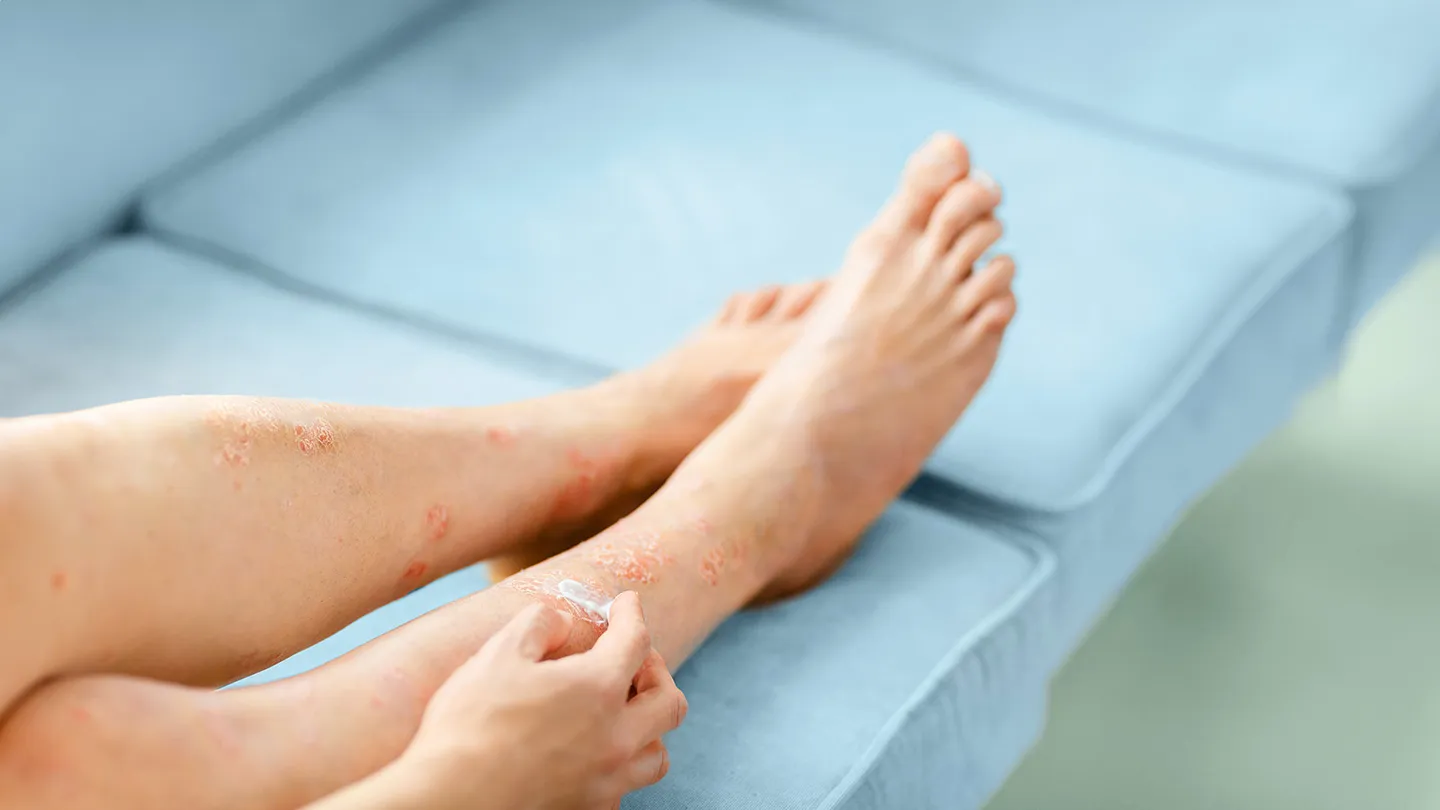5 Ways to Find Relief for Foot Psoriasis
Here are five ways to help you manage foot psoriasis:
1. Topical Medications
The first line of defense against psoriasis symptoms is medication, according to Mark Lebwohl, MD, professor and chair of the department of dermatology at Mount Sinai Hospital in New York City.
For mild cases, topical steroids could be enough to reduce flare-ups, Dr. Lebwohl says. Besides topical steroids, there are topical vitamin D analogues and topical retinoids.
Over-the-counter and prescription lotions, ointments, creams, sprays, and foams reduce swelling and itching and can help make you more comfortable, Lebwohl notes.
Ask your doctor if over-the-counter treatments with salicylic acid, lactic acid, or coal tar are right for you.
2. Phototherapy
If topical medications don’t work, Lebwohl recommends moving to phototherapy treatment for your foot psoriasis. Phototherapy, or light therapy, involves treating affected areas of the skin, such as the bottoms of the feet, with ultraviolet (UV) light. These treatments can be done under medical supervision in your dermatologist’s office or at home with a personal phototherapy unit. Light therapy has been shown to slow the growth of skin cells on the feet that are affected by psoriasis, Lebwohl says.
3. Biologic Therapy
If your foot psoriasis symptoms persist, it may be time to consider systemic therapies, meaning medications that enter the bloodstream and work within your body rather than just on the surface.
Injectable biologics target specific parts of the immune system, blocking cells or proteins that play a role in the development of psoriasis.
Newer oral treatments, called small molecules, target molecules inside immune cells and help correct the overactive immune response that causes inflammation in those with psoriatic disease.
4. Lifestyle Measures
There’s no evidence that a particular food can exacerbate or benefit psoriasis, says Lebwohl. However, a general healthy diet, combined with exercise, can have great benefits, he says, especially because there’s a correlation between obesity and psoriasis. Often, those with obesity experience more severe psoriasis symptoms. Conversely, weight loss can have a positive impact on people with psoriasis.
“Exercise and diet that specifically lead to weight loss can help,” Lebwohl notes.
In addition, psoriasis medications have been shown to be more effective for those who have lost weight, he says.
5. Foot Protection
Any kind of trauma to the feet can trigger psoriasis, notes Dr. Van Vorhees. Psoriasis can flare up in a previously unaffected part of the skin following even a minor bump or bruise, which is known as the Koebner phenomenon. So protecting your feet from injury is critical for people with psoriasis.
Avoid tight shoes and high heels because of the pressure they place on the toes. The type of material the shoe is made of is less important than the fit, Van Vorhees says.
In general, the front of the shoe should be round, rather than triangular, and loose shoes that cause friction or rubbing on the heel should also be avoided, says Van Vorhees. Flip-flops or other open-toe sandals should be worn with caution, since they can expose your toes to possible injury, she adds.
Above all, seeing your dermatologist is essential for managing symptoms that affect your feet. That’s because foot psoriasis can sometimes be mistaken for something else, such as a fungal infection.
The wrong treatment for the wrong condition can worsen symptoms and lengthen their duration, Lebwohl says.
The Takeaway
- Palmoplantar psoriasis is psoriasis that affects the palms of the hands and the soles of the feet.
- Symptoms of foot psoriasis can make it difficult to stand and walk.
- Treatments for foot psoriasis include topical medications, light therapy, and injectible and oral medications.
- Protecting your feet from injury is an important part of preventing psoriasis lesions on your feet.




